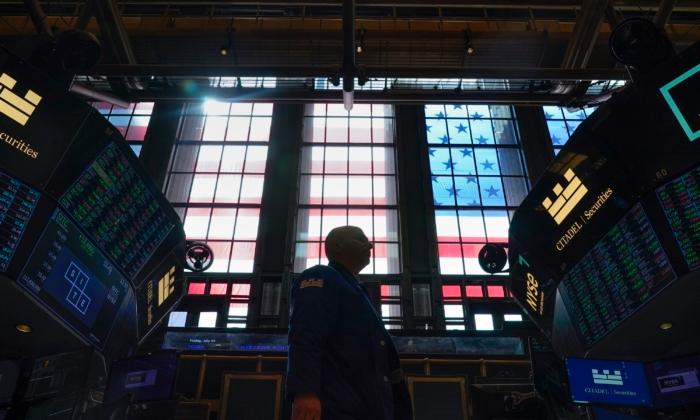A choppy day of trading on Wall Street ended Friday with slight gains for stocks, as the market notched its second straight winning week.
The market got a boost early on from a closely watched government report that showed U.S. job growth increased at a healthy, but more moderate pace last month. The report supports investors’ hopes that the Federal Reserve will hold off on raising interest rates again in its bid to lower inflation.
After initially rising as much as 0.8 percent following the release of the jobs report, the major indexes shed most of their gains and spent the day wavering between small gains and losses.
The S&P 500 finished 0.2 percent higher. The benchmark index was coming off its first monthly loss since February. The Dow Jones Industrial Average rose 0.3 percent and the Nasdaq composite closed less than 0.1 percent lower. Still, that slight dip broke its five-day winning streak.
The Labor Department reported Friday that employers added a solid 187,000 jobs in August. The job growth marked an increase from July’s revised gain of 157,000, but still pointed to a moderating pace of hiring compared with earlier this year. From June through August, the economy added 449,000 jobs, the lowest three-month total in three years.
The report also showed that the unemployment rate rose from 3.5 percent to 3.8 percent, the highest level since February 2022, though still low by historical standards.
Wall Street welcomed the latest monthly labor market snapshot, as it roots for the economy to show signs of lower inflation and cooling job growth so that the Fed will be able to ease up on its rate hike campaign.
“Today’s employment report will add to recent data which indicates the Fed can pause on raising interest rates,” said Steve Wyett, chief investment strategist of BOK Financial.
The strong job market, along with consumer spending, has so far helped thwart a recession that analysts expected at some point in 2023. But they also made the central bank’s task of taming inflation more difficult by fueling wage and price increases.
Market jitters over the possibility that the Fed might have to keep interest rates higher for longer—following reports showing the U.S. economy remains remarkably resilient—led to the market’s pullback in August.
But this week, stocks mostly rallied following reports showing job openings fell to the lowest level since March 2021, consumer confidence tumbled in August and a measure of inflation closely tracked by the Fed remained low in July. The recent economic snapshots have bolstered the view on Wall Street that the Fed may hold rates steady at its next policy meeting in September.
“From a data-dependent Fed perspective, the economic data we have seen in August in conjunction with today’s jobs report certainly reinforces the idea that we have seen the last rate hike during this cycle,” said Charlie Ripley, senior investment strategist for Allianz Investment Management.
The central bank has raised its main interest rate aggressively since 2022 to the highest level since 2001. The goal has been to rein inflation back to the Fed’s target of 2 percent. The Fed has maintained that it is ready to keep raising interest rates if it has to, but will base its next moves on the latest economic data.
Bond yields were mostly rose Friday. The yield on the 2-year Treasury, which tracks expectations for the Fed, got as high as 4.91 percent at one point, but fell to 4.88 percent by late afternoon. It was at 4.87 percent late Thursday. The yield on the 10-year Treasury, which influences interest rates on mortgages and other consumer loans, rose to 4.17 percent from 4.11 percent.
Banks and financial services stocks accounted for a big share of the gains among S&P 500 companies. Charles Schwab rose 2.3 percent and U.S. Bancorp added 1.5 percent.
Rising oil prices helped push energy stocks higher. Exxon Mobil rose 2.1 percent and Chevron was up 2 percent.
The price of U.S. crude oil climbed 2.3 percent, extending its weekly gain to 7.3 percent. The increase comes as production cuts by major producers continue to prop up the market. Many industry analysts are expecting to Saudi Arabia to extend those cuts through October.
Communications stocks were among the laggards. Disney dropped 2.4 percent after the entertainment giant pulled its programming, including ESPN, from Charter Communication’s Spectrum TV after the companies failed to come to terms on a new distribution deal. Charter was down 3.6 percent.
Walgreens Boots Alliance fell 7.4 percent after the company announced that CEO Rosalind Brewer was stepping down at the end of the month and that Ginger Graham would take over as interim CEO.
All told, the S&P 500 rose 8.11 points to 4,515.77 Friday. The Dow gained 115.80 points to 34,837.71, and the Nasdaq slipped 3.15 points to 14,031.81.
U.S. markets will be closed Monday for Labor Day.







